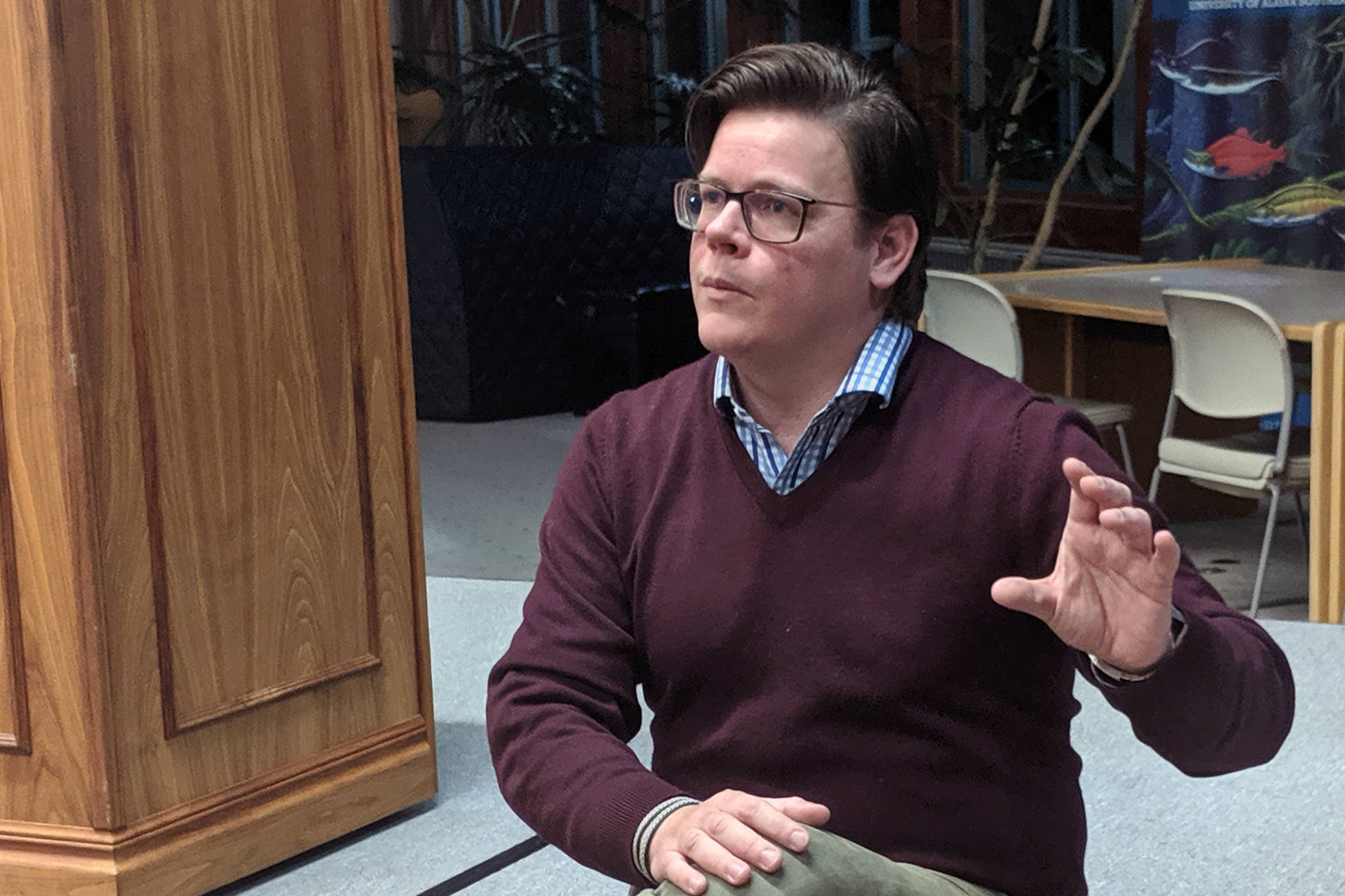Cultural appropriation was always around and is now a near-constant in an increasingly interconnected world, said Jacob Adams, an attorney and cultural researcher.
That doesn’t mean that misappropriation — which he defined as taking cultural elements without permission and understanding in a way that the appropriated group feels was unfair — needs to be omnipresent.
Appropriation has been a hot-button issue in Juneau in recent years after many objected to and defended a 2018 Wearable Art entry. It also has a long-standing prevalence in Southeast Alaska because of the popularity of Northwest Coast Art with both Alaska Native and non-Native people.
“So much controversy could be avoided by injecting more understanding into it,” Adams said during his Evening at Egan lecture Friday at University of Alaska Southeast. “Even with permission, without understanding, you might fall into a trap.”
Appropriation without understanding can lead to perpetuating harmful depictions and knowledge loss, Adams said.
[Singer-songwriter, poet and retired teacher publishes first children’s book]
As an example, Adams said if someone made boats in the style of the ones traditionally made by the Sámi people, who are indigenous to an area that includes parts of Norway, Sweden and more, it could crowd indigenous artists out of the market and close off a source of income for a potentially fragile culture.
That could lead to the loss of “what we don’t even know,” he said.
Adams said it’s also worth considering the economic value of cultural knowledge, regalia or tradition. He drew a parallel between misappropriation and the Western legal system.
A Sámi reindeer herder’s knowledge of the herd is the equivalent of a trade secret, Adams said.
Reproducing or taking Tlingit at.óow — which can include clan crests, names, stories and more that have both monetary value as well as social and spiritual value — is comparable to theft.
Scott Foster, a member of the audience, asked if art would be protected by freedom of expression.
“Freedom of expression does not give you the right to steal,” Adams said.
He said a lot of times cultural misappropriation is defended by people with the same arguments that are used to defend unofficial fan clubs or other organizations that use legally protected logos.
Adams said people will say a company should be glad people are passionate enough about their brand to use an image, and that their organization is ultimately good for the company. However, Adams said that doesn’t change the law.
He compared misappropriating at.óow to improperly using a Ford logo.
“In this one area, they’re no different,” Adams said.
He said intellectual property law, land rights, privacy and legal areas are all possible areas of protection for cultural misappropriation.
“Society at large is becoming more sensitive to those issues,” Adams said.
That sensitivity should also come with thoughtfulness and understanding, Adams said. Often, discussions of cultural appropriation can be derailed by blending concerns or invalid arguments.
He said it’s important to separate objections to appropriation from racism, sexism or other concerns.
As an example, Adams cited controversy around the movie “Frozen” and its depiction of Sámi culture. Around the time the movie came out, Adams said there were accusations of cultural misappropriation and white-washing were common online.
While the movie did use elements of Sámi culture, Adams said the white-washing accusations were off base since the Sámi people generally have the same skin tone as the characters in the movie.
“This example kind of articulates the problems we have with discussing cultural appropriation,” Adams said.
By introducing an argument operating on a false premise, Adams said real issues were co-opted.
“It’s not furthering anyone’s objective,” Adams said.
[See the faces behind the Mask-erade masks]
He said it’s also important to consider why a culture was appropriated. Sometimes there may be a good explanation, or at least one that many would find reasonable — in art, there’s a lot of gray area.
Adams said there are steps that researchers, artists or makers can take to make sure they depict a culture ethically and responsibly.
Those include sensitivity; receiving free, prior and informed consent, and sharing benefits.
As an example, Adams cited “Frozen 2.” The Sámi were involved in the making of the movie, and a Sámi-language version of the film is expected.
“There is a route to do things appropriately,” Adams said.
• Contact reporter Ben Hohenstatt at (907)523-2243 or bhohenstatt@juneauempire.com. Follow him on Twitter at @BenHohenstatt.

